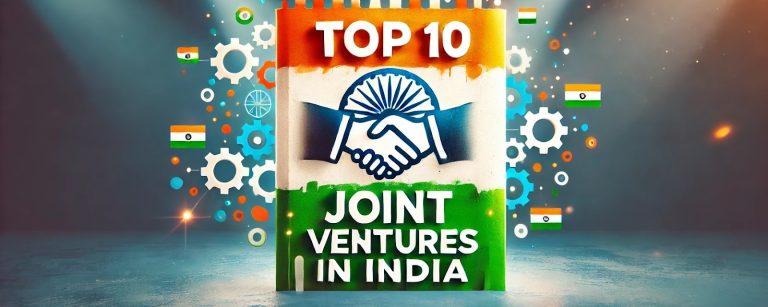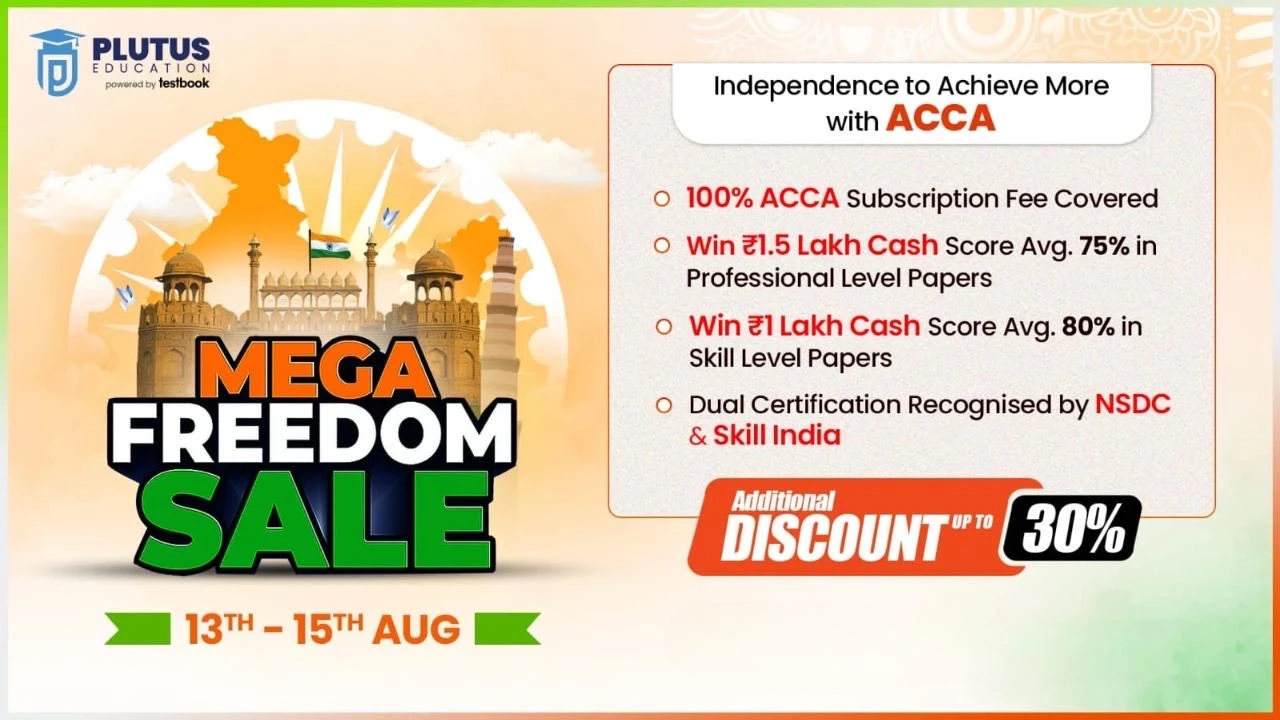A joint venture is a strategic alliance in which two or more parties join together to pool their resources, expertise, and capital for a specific business objective. In contrast to mergers and acquisitions, a joint venture establishes a separate legal entity in which the collaborating entities retain their separate identities while contributing toward a common objective. The top 10 Joint Venture Companies in India epitomize the spirit of partnerships that merge international expertise with Indian resources.
Pros of Joint Venture Companies in India
Joint ventures form an increasingly popular business trend in India, offering a dynamic means of accessing new markets to companies. JVs offer strong opportunities for domestic and international businesses alike to attain mutual goals together in complex * markets.
- One of the most significant benefits of JVs is the pooling of resources and expertise. It allows businesses to share the strengths of each partner with this collective effort. Advanced technology may be located in one company, while an experienced market understanding may be represented by another, for instance.
- Joint ventures are an effective tool for entering new or narrow markets. In any internationalization or niche area venture, often it is best to be joined by a local partner who would have already built contacts both with the relevant regulatory authorities and customers.
- Under a joint venture, both partners incur risks resulting in a new venture. Hence it is easier to take away both financial exposure and loss as well. Most large-scale ventures involving infrastructural development or very high-tech innovative projects result in many uncertainties that one may be dogged about.
Cons of Joint Venture Companies in India
Though joint ventures are the companies that offer much-needed advantages, they also involve issues.
- Differences in corporate culture and management styles can lead to misunderstandings. For instance, Mahindra Renault faced operational philosophies that were not aligned. Revenue distribution disagreements can strain relationships between partners, especially if the venture does not meet financial expectations.
- It is not straightforward to get out of a joint venture. In most cases, the expected outcome will not materialize, meaning it gets complicated because of common resources and investments. One of the main reasons is management and decision complexity because JVs demand two or more entities collaboration that have possibly different corporate cultures, management styles, and objectives.
- The biggest disadvantage is the potential for unequal contributions or an imbalance of commitment. If one contributor invests more resources, it creates resentment and can be very stressful for the partner.
- Confidentiality risks also exist, as sharing intellectual property, trade secrets, or other sensitive information may expose one partner to competitive disadvantages if the JV dissolves or the partnership sours.
Top 10 Indian Joint Venture Companies in India
India has become a hub for Joint Ventures (JVs), fostering growth across industries like automotive, pharmaceuticals, IT, and infrastructure. Top JV companies in India often represent partnerships between prominent Indian enterprises and leading international firms, creating benchmarks in quality and innovation.
Tata Starbucks
Tata Starbucks, a joint venture between Tata Global Beverages and Starbucks Coffee Company, was launched in 2012 to introduce premium coffee experiences in India. With the expertise of Starbucks in global coffee retail and Tata’s knowledge of Indian markets, this has created a brand that strikes a chord with the urban consumer. The company, through Tata Starbucks, offers beverages loved around the world while adapting to the Indian palates by serving masala chai and turmeric lattes, among many others. Also, focusing on sustainability through sourcing at local levels, Tata Coffee’s wide reach empowers coffee farmers to produce, thus creating its brand to grow rapidly within metropolitan India.
Bharti AXA General Insurance Company Ltd
High-power insurance products were brought to India by a collaboration between Bharti Enterprises and AXA Group in 2008. Bharti AXA General Insurance uses the in-depth knowledge Bharti has concerning the Indian market and coupled it with AXA global insurance capabilities to offer well-tailored policies of Indians’ choice. Products offer health, travel, motor insurance up to customized risk management in corporate settings. Insurance is more accessible and user-friendly for customers through a digital-first approach, with online policy issuance and claim tracking. Bharti AXA, being customer-centric in its approach, has been instrumental in increasing insurance penetration in India, especially among first-time buyers in urban and semi-urban areas.
Mahindra Renault
Mahindra Renault was one of the strategic joint ventures between Mahindra & Mahindra and Renault in 2005, to bring affordable yet reliable cars to India.
Their flagship offering was the Logan sedan, which targeted middle-class families seeking comfort and efficiency. Though the venture had its share of struggles with branding and market positioning at the beginning, it did help lay the ground for international automotive collaborations in India. The fact that the collaboration ended in 2010 did not stop Renault from finding success in India with Duster and Kwid models. The reason is due to the base knowledge gained through the association with Mahindra, which made them realize the value-driven Indian consumer preferences.
AirAsia India
Formed in 2013, AirAsia India is a joint venture between AirAsia Berhad, one of Asia’s leading low-cost carriers, and Tata Sons, a cornerstone of Indian business.
The airline was launched with the vision of making air travel affordable for India’s burgeoning middle class. AirAsia India introduced competitive pricing, exceptional service, and on-time performance standards that disrupted the Indian aviation industry. It focused on tier-2 and tier-3 cities, ensuring connectivity beyond traditional hubs. The airline’s innovative cost-control measures and customer-focused approach have made it a household name in Indian aviation, catering to millions of passengers annually.
Hindustan Aeronautics Limited (HAL)
Hindustan Aeronautics Limited is the first aerospace and defense manufacturer from India.
HAL has been associated with international defense companies for building high-tech military equipment in the country. Such ventures include Boeing, Dassault Aviation, and Sukhoi. The outcome of it is the production of a helicopter, fighter jet, and transport aircraft completely designed, developed, and manufactured in India that enhances Indian defense. HAL has under license Sukhoi-30 MKI fighter aircraft and Tejas Light Combat Aircraft. Providing an ecosystem for indigenous innovation, HAL has emerged to be the backbone of India’s defense industries and as a strategic alliance partner with foreign companies in its participation with its joint ventures.
Tata Hitachi Construction Machinery Co. Ltd
This venture of Tata Group with Hitachi Construction Machinery came into the market in 1998 and produces high-end construction equipment.
The infrastructural requirement of India will be dealt with through available excavators, wheel loaders, and cranes in Tata Hitachi. The business combines engineering excellence from Tata and the master technology from Hitachi to create productive, long-lasting machines. Tata Hitachi has been aiding various projects from highways to housing in urban areas and supporting infrastructure development in India. Besides that, the company believes in sustainability by providing green environment-friendly equipment and sustainable manufacturing.
Sun-Ranbaxy (Now Sun Pharma)
Sun Pharma merged with Ranbaxy in 2014. Sun Pharma was merged with Ranbaxy which amalgamated its manufacturing capability with Ranbaxy’s international footprint.
This is a joint venture, epitomizing the potential that India may offer in the health sector. Today, it is one of the world’s leading generic drug manufacturers, providing chronic disease medicines at affordable prices such as diabetes and cardiovascular ailments. The merger enabled the company to expand its research and development capabilities, which has led to innovation and advancement in drug delivery systems. The merger helped the company to develop employment in India directly and indirectly. For instance, Maruti Suzuki employs thousands of people within its manufacturing plants and dealership networks.
Hindustan Aeronautics Limited (HAL)
Hindustan Aeronautics Limited is the first aerospace and defense manufacturer from India.
HAL has collaborated with international defense companies in building high-tech military equipment in the country. Such ventures are Boeing, Dassault Aviation, and Sukhoi. The outcome is a helicopter, fighter jet, and transport aircraft that are wholly produced in India, enhancing Indian defense capability. Sukhoi-30 MKI fighter aircraft and Tejas Light Combat Aircraft have been under license manufactured by HAL. To promote indigenous innovation, HAL has acted as a backbone of the Indian defense industries and a strategic alliance partner to foreign companies.
Hero Honda Motors Ltd.
Hero Honda, a joint venture between Hero Group and Honda Motor Company since 1984, revolutionized the Indian two-wheeler manufacturing scene.
The company was instrumental in making motorcycles accessible to the masses by focusing on affordability, reliability, and fuel efficiency. Models like Splendor and Passion became iconic, cementing Hero Honda’s dominance in the market. Although the venture was discontinued in 2011, the legacy extends to the two business interests taken forward by Hero MotoCorp and Honda. Because of this joint venture, standard-setting partnerships had emerged in the automotive industry and had greatly changed India’s future mobility landscape. Maruti Suzuki
Maruti Suzuki is one of India’s most celebrated joint ventures, established in 1981. It was a collaboration between Maruti Udyog and Suzuki Motor Corporation that transformed India’s automobile industry by offering reliable, fuel-efficient, and affordable vehicles.
The Maruti 800 became synonymous with middle-class aspirations, ensuring that Suzuki would remain highly placed in the Indian marketplace. Maruti Suzuki now leads the Indian automobile market with a robust product lineup that meets and serves the diverse aspirations of its customers. Its deep network of service centers across the country and constant innovation – such as a hybrid and CNG product range – has further entrenched this market position.
ICICI Prudential Life Insurance
Launched in 2001, ICICI Prudential is a joint venture between ICICI Bank and Prudential plc.
Bringing global insurance practices to India, it offered a wide range of life insurance and investment-linked products. With financial literacy and transparent customer engagement being the hallmark, ICICI Prudential has been a leader in the Indian life insurance sector. The joint venture is meeting the changing financial needs of Indian customers through digital channels and innovative products such as ULIPs. It not only made millions more financially sound but also helped in creating a strong insurance infrastructure in the country.
Top 10 Joint Venture Companies in India FAQs
Why are joint ventures popular in India?
India offers diverse opportunities and market potential, making it ideal for partnerships that combine local and global expertise.
What are the challenges faced by joint venture companies in India?
Companies often face cultural differences, regulatory complexities, and profit-sharing disputes.
Which industries in India see the most joint ventures?
Automobiles, insurance, aviation, pharmaceuticals, and construction are leading sectors for joint ventures.
How do joint ventures contribute to India’s economy?
They boost employment, bring technology transfer, and enhance India’s global trade relations



